If you are in the Italian Alps you might want to read this text about best mountains to climb in Dolomites without special equipment. These are simple tours doable by anybody in normal physical and weather conditions.
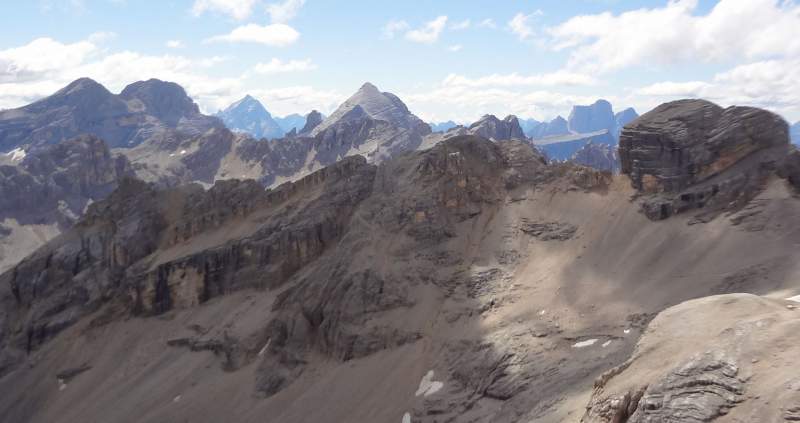
All these mountains I have climbed myself so I can share my first-hand experience and help if you need more information.
But make no mistake, these mountains are high, all in the range of 3000 meters. The top picture shows the environment. So you will feel the altitude. Also make sure you are ready for sudden weather changes, at such elevation your are at mercy of the mother nature.
All these mountains can be climbed within a day, so you can have day tours. But there are usually huts on the routes and you can do this in an easier way by staying in the huts.
Some of them can also be climbed on round tours, and this means you climb by following one route and descend by following another route. In some cases this implies ferratas and this then means you need extra equipment. So if you want to play safe, follow the routes described here.
Dolomites mountains to climb without equipment
So here is my list, the mountains are ordered by elevation from lower to higher:
1. Sasso Piatto
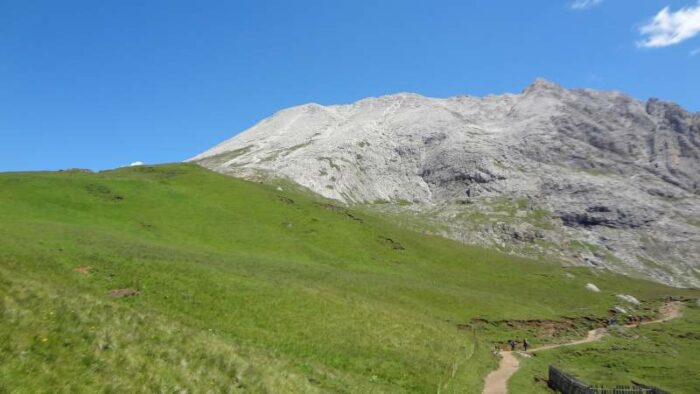
This mountain can be climbed from Sella Pass by following its normal route. This is how I climbed it myself. A bigger part of the route is more or less flat with some ups and downs, and this part is known as Sentiero Friedrich August. There are many huts and shelters on the route, and the last hut in the series is Saaso Piatto hut.
The elevation of the start point at the Sella Pass is 2218 m (7277 ft). The summit is at 2958 m (9705 ft). It took me 3 hours and 10 minutes from the Sella Pass, and I think anybody can do this in the same time or even faster.
The picture above shows the summit view once you pass the Sasso Piatto hut. So only this last part is rock and the route zig-zags up without any exposed section. Please read more in my full text.
2. Piz La Varella
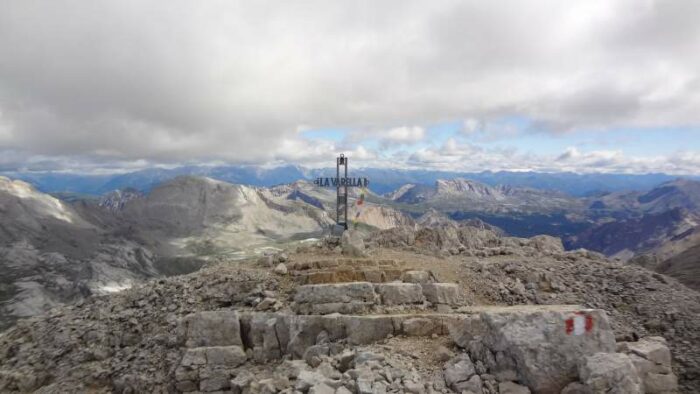
I climbed this mountain from Capanna Alpina and the elevation at start point is (1720 m, 5643 ft). The summit is at 3055 m (10022 ft), so you have an elevation difference of 1335 m (4380 ft), and the route goes up all the time. I did the tour in 4 hours and 30 minutes and I would say anybody can do it with such a timing or faster.
You do not need any special equipment, this is all the time a walk up with almost no exposed sections. There are just a few passages below the summit where you would want to be more careful.
The route is first through the woods, then you are on a high plateau that is over 2000 meters of elevation, and after that you start the last and more steep section towards the summit. Compared to the other peaks described here in the list, this mountain is far less crowded.
Please read more in my separate text.
3. Piz Boè
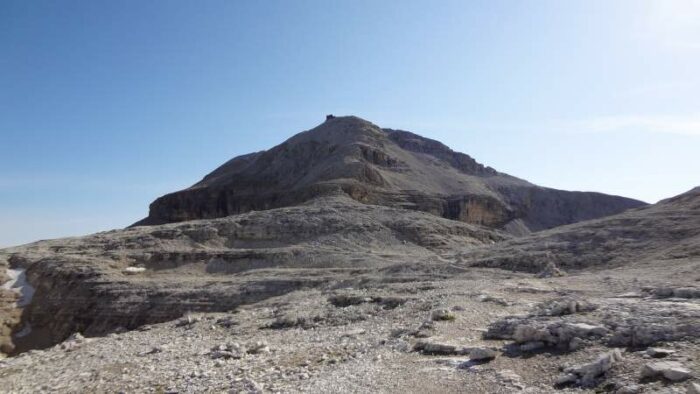
This mountain can most conveniently be climbed from Pordoi Pass where you have the highest access point at an elevation of 2239 m (7346 ft). The elevation of the mountain summit is 3152 m (10341 ft).
You can also use a lift that goes to the summit of Sass Pordoi (2950 m, 9678 ft), and then spend the day by making a loop on a very high plateau, and getting to the summit of Piz Boe. I have climbed the mountain from the pass in 3 and a half hours in total.
There are three mountain huts on this round tour and you can do this easily in several hours. The picture above shows the summit with the hut that is exactly there. You will find more details in my full text.
4. Tofana di Rozes
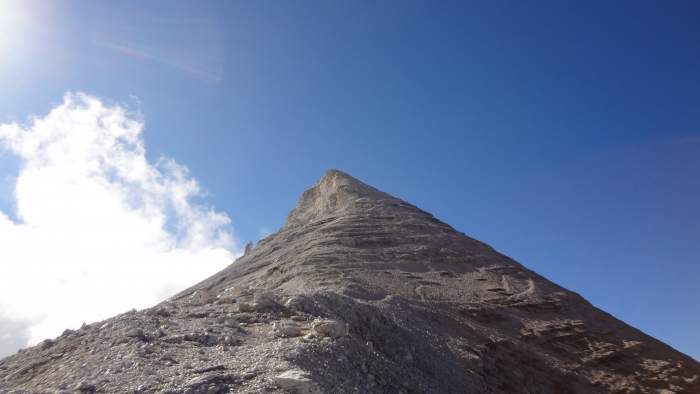
This is the highest mountain in the list and when you watch it from the surrounding valleys it looks incredibly high and hard to climb. But the normal route is indeed a walk-up type.
The most convenient start point is from Rifugio Dibona car parking where you are at an elevation of 2083 m (6834 ft). The summit is at 3225 m (10580 ft), so this is a demanding height difference. However, the physical distance is not so huge and it is doable in 4-5 hours. I climbed it in 4 hours and 30 minutes.
Note that you also have Giussani hut on the way up so you can stay there overnight if you wish. It is at 2600 m (8530 ft) elevation. More details about the route you have in my full text.
Final thoughts
So this was my selection of the best mountains to climb in Dolomites without special equipment. Now, it would be normal to say what kind of equipment you really need. It is best to show examples, so to realize what you will need here is what I used.
All these mountains I climbed with my Salomon Quest Prime GTX boots, and I used the Osprey Stratos 24 pack which is perfect for such day tours. I always use a pair of trekking poles, but this is up to you. Here I used a pair of Komperdell poles.
Now you see that this is nothing special, any good hiking boots will do the job, and any day pack will be good enough. But I always carry all waterproof layers, plus gloves. I can tell you, I needed it on my climb of Piz Boè. It was raining heavily on my way back. You might want to check also my text about Pordoi Pass which was my start point to Piz Boè.
As for accommodation: This is a popular area but there are many options to rent an apartment or you can choose any of the camping spots around.
With so many mountain passes around, this area is a paradise for cyclists. On the official roads they use classic bicycles, but on numerous off-road trails you will see them many with electric mountain bikes. Some of them have enormously wide tires.
Thank you for reading. Let me know if you have questions, there is a comment box below. Have a nice day.
Leave a Reply